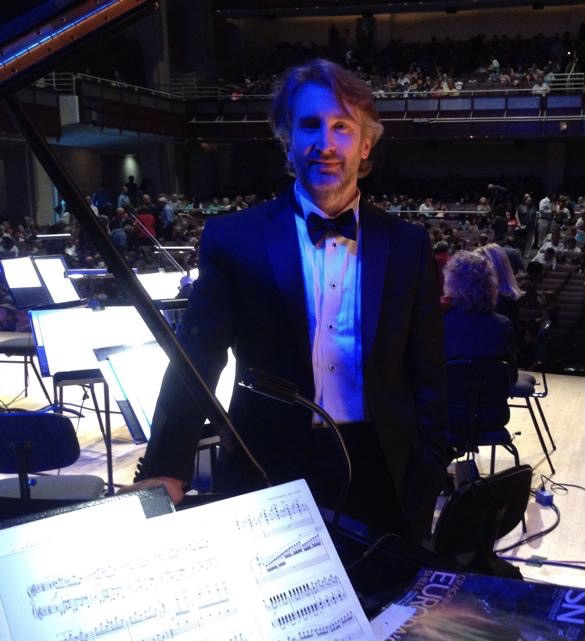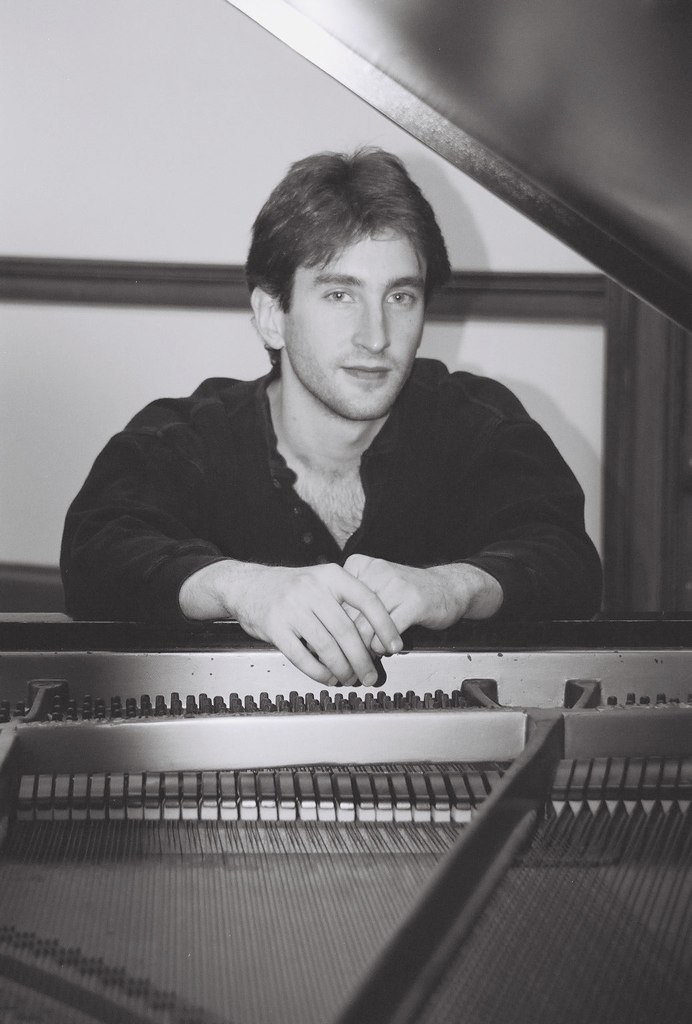About Me.
I grew up in the 70s and 80s in Mississippi, and I learned a great deal from listening to my older siblings practice for their piano lessons. I have very early memories of sitting in my mom’s lap while she would play and sing from a Walt Disney song book. I still remember the book art.
Perhaps this is why one of my first attractions to music was for song form. The works of Billy Joel played a huge influence. When no one else was home after school I would listen to vinyl records and dance and play along. I learned a great deal from this.
I remember the magical feeling of learning from Mr. Joel that when playing a C Major chord, you don’t need an E in the Right Hand if it’s present in the bass. A wonderful introduction to Bachian voice leading! I remember playing with the headphones on late at night when everyone else was asleep and discovering how to play the sharp 9 chord I had just heard Paul Shaffer use on Late Night with David Letterman. I didn’t know what the chord was called at the time, but it didn’t matter. I knew what it sounded like!
I grew up in the 70s and 80s in Mississippi, and I learned a great deal from listening to my older siblings practice for their piano lessons. I have very early memories of sitting in my mom’s lap while she would play and sing from a Walt Disney song book. I still remember the book art.
Perhaps this is why one of my first attractions to music was for song form. The works of Billy Joel played a huge influence. When no one else was home after school I would listen to vinyl records and dance and play along. I learned a great deal from this.
I remember the magical feeling of learning from Mr. Joel that when playing a C Major chord, you don’t need an E in the Right Hand if it’s present in the bass. A wonderful introduction to Bachian voice leading! I remember playing with the headphones on late at night when everyone else was asleep and discovering how to play the sharp 9 chord I had just heard Paul Shaffer use on Late Night with David Letterman. I didn’t know what the chord was called at the time, but it didn’t matter. I knew what it sounded like!

Then I began formal instruction, first with Ouida Graves when I was a child, and later with Lois Leventhal at the University of Southern Mississippi. They were both great personal models of how to teach with warmth and excellence. Mrs. Graves taught me the importance of tone, and Dr. Leventhal taught me that I can play like a beast and have consistency, too!
My teacher at the Eastman School of Music was much less personal with me, which became a model for me of how I *don’t* want to teach. He gave me my first “B” in piano! Nevertheless he taught me great artistry and I finished my tutelage with him with an “A.”
Thus began a heady period for me when I moved to North Carolina and performed as a singer/songwriter, played in funk and rock bands, performed with the North Carolina Symphony orchestrally and as soloist...I look back at this time with such fondness. I can’t believe the variety of excellent musical experiences I was a part of! I produced my own CD of piano compositions and arrangements, I performed a recital with world-class violinist Joshua Bell, I recorded a CD with the NC Symphony accompanying Branford Marsalis and his combo. Just incredible experiences!
And then I met two amazing women who changed my life as a teacher. My studies with both of them gave me an understanding of how to help students learn piano that I believe will be uniquely helpful for you. First was Sheila Paige. My lessons with Sheila helped me understand piano technique in a way that helped me play with great power and control. They allowed me to communicate a combination of movement and tone in a way that even my youngest students also learned to play with great power and control!
A little later I began working with my friend Marilyn Lowe, author of Music Moves for Piano. Marilyn is the leading figure in modern piano pedagogy. She's a pioneer in applying Music Learning Theory to piano lessons. From studying with her I've learned to engage students with music in a way that's substantive and lasting, and incredible fun, too!
Thus began a heady period for me when I moved to North Carolina and performed as a singer/songwriter, played in funk and rock bands, performed with the North Carolina Symphony orchestrally and as soloist...I look back at this time with such fondness. I can’t believe the variety of excellent musical experiences I was a part of! I produced my own CD of piano compositions and arrangements, I performed a recital with world-class violinist Joshua Bell, I recorded a CD with the NC Symphony accompanying Branford Marsalis and his combo. Just incredible experiences!

And then I met two amazing women who changed my life as a teacher. My studies with both of them gave me an understanding of how to help students learn piano that I believe will be uniquely helpful for you. First was Sheila Paige. My lessons with Sheila helped me understand piano technique in a way that helped me play with great power and control. They allowed me to communicate a combination of movement and tone in a way that even my youngest students also learned to play with great power and control!
A little later I began working with my friend Marilyn Lowe, author of Music Moves for Piano. Marilyn is the leading figure in modern piano pedagogy. She's a pioneer in applying Music Learning Theory to piano lessons. From studying with her I've learned to engage students with music in a way that's substantive and lasting, and incredible fun, too!
Integrating the psychological aspects of music learning I got from Marilyn with the piano technique I learned from Sheila has allowed me to create a robust and unique method of teaching piano. A way of learning where everyone can learn to create and play. A way of learning that works for you!
At no point was learning piano a tedious experience for me. It shouldn't be for you, either. Teaching is so much more than just telling you what I know. It’s engaging you with music, and sharing a vocabulary you can use to think music for yourself. It all started with family for me. I think a lot of times we in the music profession put “music” on a high pedestal and then lament that our students aren’t achieving. But I think music is a way to make life richer. If sharing it helps you add meaning to your life the way my teachers helped me add meaning to mine, then I will have done a pretty good job.
